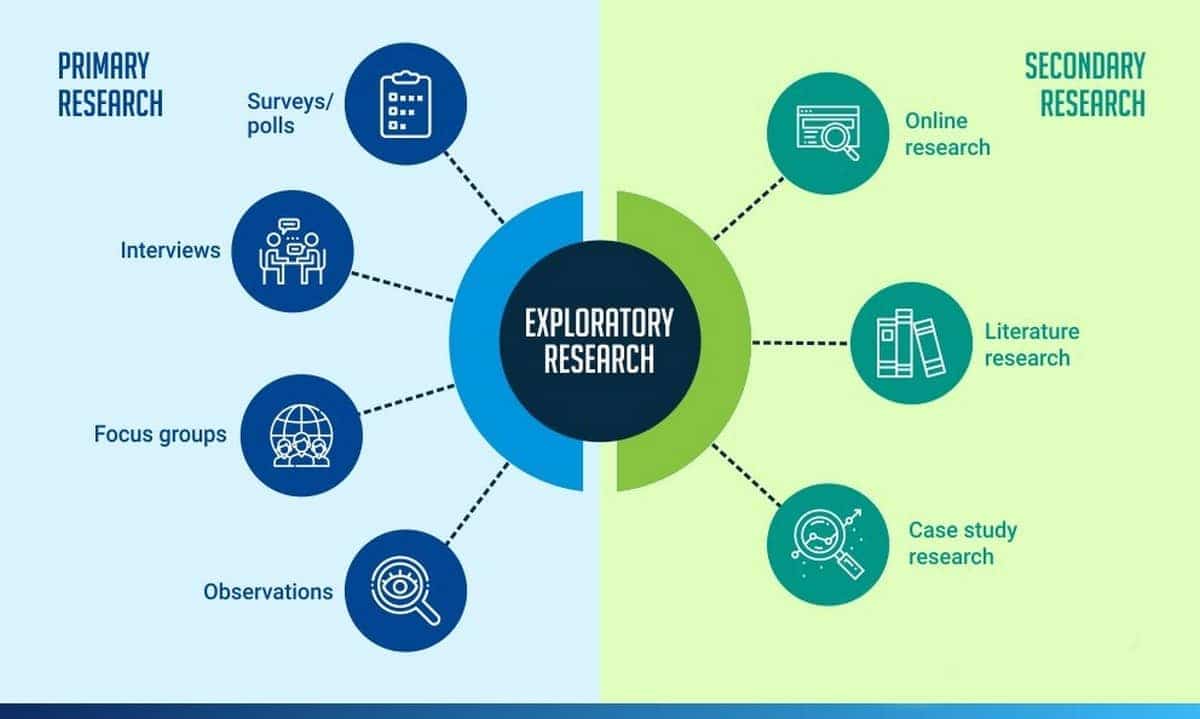Qualitative and Quantitative Research - Concept
Qualitative and Quantitative Research - Concept
As the names suggest quantitative research produces numerical data whereas qualitative research generates non numerical data. However, this is only a superficial understanding of the terms. In the first chapter, while exploring the types of research, we had hinted that when there is uncertainty or when the problem is not clearly defined, we deploy exploratory research and use qualitative studies for it. When there is little or no ambiguity and the business problem is structured, we implement descriptive or casual research and use quantitative techniques for it. Let us take the discussion further from here.
Qualitative Research
Focus
In a nutshell, qualitative research gives us vital insights in comprehending why do consumers feel or behave in a manner they do. It helps in identifying and perceiving the underlying opinions, behaviour patterns and motivations. Qualitative research aids the formulation of hypothesis to be used for deeper exploration or quantification. In a way, it adds richness to the information gathered by quantitative research by understanding instead of measuring. To sum up, the qualitative approach helps decipher the less rational and more emotional perspective of the consumer’s decision making nature, i.e. how would I feel if I were in the consumers’ shoes?
Usage
Qualitative studies assist in the following business situations:
- Market Study: Analyzing consumer interest in the company’s new idea in a particular demographic.
- New Product Development: Understanding the actual need of the end user.
- Creative Development Research: Pertaining to branding; what should be said and how should it be said.
- Diagnostic Studies: Understanding how is the company’s category or brand doing as compared to the competitor’s offerings and image respectively.
Techniques
Qualitative research can be carried out by:
- Focus Group Discussions: This is the most effective and preferred technique for qualitative studies. Respondents, in a group of 5-8 people, are made comfortable and asked general questions first. Gradually, the conversation is shifted to the topic of research. It helps obtain initial reactions to marketing programs or understand the consumers’ impressions about a new product concept.
- In Depth Interviews: Personal interviews are conducted instead of focus groups in the following cases:
- Discussing sensitive, confidential or embarrassing topics (Example: Women’s hygiene issues)
- Requirement of detailed probing (Example: Purchase psychology for an automobile is best done with the respondent one on one)
- Situations where the respondent may get influenced by the group response (Example: Opinion on TV censorship where social norms prevail)
- Interviews with highly professional people with busy schedules (Example: Understanding required from doctors on a new medical topic )
Another term associated with qualitative research and worth mentioning here are projective techniques. These are ways of extracting information from respondents that capture the emotions in consumer behaviour. Often direct questions do not bring out the hidden motivations as consumers are themselves not fully aware of their reasons and naturally are not able to express themselves fully. Direct questions may give sensible answers, but they may not necessarily be ‘real’ answers. For this reason, projective techniques such as the below ones are used:
- Brand Personalities: The strength of advertising can be tested by imagining brands as persons or objects. For example, asking that if Sunsilk was a person, what would he be like?
- Collages: Asking respondents to draw collages of a brand to help understand what consumers think about symbols used for advertising the brand.
- Word Association: First word that comes to mind upon mentioning a particular word. For example if the word Coke brings out the first mentioned word as happiness, Coke is maintaining its strong brand image.
Quantitative Research
Focus
The aim of this method is to consume numerical data and present facts or uncover patterns in the study. The aftermath of quantitative research is results that are projectable because they are drawn statistically. Basically, while qualitative research is subjective, the quantitative method is more objective. Another characteristic of quantitative research is that it is drawn from a reasonably sized and carefully selected sample which is representative of the target population. The methods of choosing a proper sample are discussed in the previous chapter. Typically, a terminology of 95% confidence interval is considered good while deciding the sample sizes. This actually means that if the survey is reoccurred 100 times, 95 times the same response would be obtained.
Usage
Quantitative research is most widely used for determining cause effect relations. For example, if the marketing budget is increased by 15%, how much is the revenue expected to increase. If the strength between the dependent (revenue) and independent (marketing budget) variable is strong, the test hypothesis holds true and the company should invest more in its marketing. Thus a decisive stance can be taken from the facts presented in this research.
Techniques
Data collection for quantitative studies is done by various kinds of surveys using questionnaires. The survey can be done through various mediums such as face-to-face, email, telephonic, online, etc. Designing questionnaires for a survey is a detailed topic which will be covered in the next chapter. For now, we will explore the methods for conducting a survey.
- Mail survey: Mail surveys are convenient and maintain anonymity of the respondent. They are also relatively inexpensive. However the major drawback is that feedback cannot be obtained from the respondent.
- Telephonic & Face-to-face survey: There is little scope of error in these types of survey as the interviewer is available for assistance. However, while guiding, the interviewer may sometimes influence the respondent leading to biased answers.
- Online: Surveys carried out over the internet are gaining popularity these days as they can reach a wide audience. The downside is that without incentive, the respondent at the end may not be interested in taking up the survey or answering all questions seriously.
- Hybrid: A fusion of techniques can be used to record better responses. A commonly used hybrid method is Telephone-Mail-Telephone (TMT) wherein respondents are instructed over the phone and then sent the survey over mail to be filled at their convenience.
The choice of the above mediums depends on the budget, time and complexity. If budget is a constraint, mail surveys can be used. Online surveys are instant and hence should be deployed when there is a time crunch. When interaction is required, personal or telephonic surveys must be utilized.
Concluding Remarks
We have seen in the sections above that in which situations the usage of quantitative research is preferable over qualitative research and vice versa. Ideally, if there are less budget constraints, we can use both types as they give variant perspectives and complement one another. Sometimes both have to be used in tandem as in case of Usage and Attitude Studies that we will see in the later chapters. Finally, a qualitative research will generate a more narrative report with a contingent account and direct quotations from the respondents. On the contrary, a quantitative research will produce a statistical report with correlations, significance, means, etc and hard facts.









